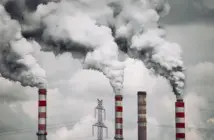Transitioning to a waste disposal levy escalator process over a seven-year period could increase New Zealand’s recycling rate from 28 per cent to 60 per cent, according to a report by environmental consultancy Eunomia.
A Wasted Opportunity – Using the waste disposal levy to create economic and environmental advantage for Aotearoa New Zealand  says raising and restructuring the current waste disposal levy of NZ$10 per tonne could boost its gross value added (GVA) by NZ$500 million.
says raising and restructuring the current waste disposal levy of NZ$10 per tonne could boost its gross value added (GVA) by NZ$500 million.
The report recommends moving 32 per cent more waste to recovery to boost the recycling rate to 60 per cent while also contributing additional levy revenue of NZ$200 million and creating an estimated 9000 jobs.
The New Zealand Waste Levy Action Group, a consortium of public and private sector organisations, published the report to coincide with the Ministry for the Environment’s (MfE) review of the levy – currently one of the lowest in the developed world.
Eunomia’s study recommends that:
- the levy rate is increased to NZ$140 per tonne for the ‘active’ waste landfilled
- a lower rate of levy of NZ$15 per tonne is introduced for landfilling inert waste
- introduction of a NZ$40 per tonne levy on waste sent for incineration
- monitoring and enforcement systems be improved to minimise illegal waste disposal – the costs of which would be greatly exceeded by the additional levy income.
The report maps out an effective transition to the new system using a waste disposal levy escalator process over seven years, echoing the process that saw UK recycling rates increase dramatically in the 2000s.
It also outlines an implementation programme with suggested timings and actions.
“It’s widely recognised that, at NZ$10 per tonne, New Zealand’s waste levy does not reflect the true cost of disposal, or stimulate market change,” says Eunomia Senior Consultant and report author Tim Elliott.
“In fact, because the levy has not been increased since it was first introduced in 2009, inflation has eroded its value by around 15 per cent.”
“The suggestions we have made in this study will stimulate waste prevention, reuse and recycling, and will deliver significant benefits for the economy and the environment.”
Head of Eunomia’s Auckland office Duncan Wilson says the most effective ways to move material up the waste hierarchy, promoting prevention, reuse and recycling, is to make waste disposal more costly.
“What the report has shown is that by making some well-designed changes to the levy, we can get much better outcomes for New Zealand.”
“The recommendations are all possible within the current legislation and the cost of implementation can easily be funded through the increased levy income.
“There are no real reasons for us not to take this forward,” he concludes.




